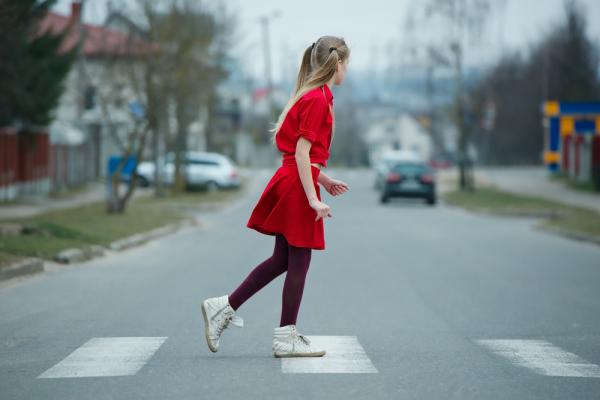
Fourteen is a big year of transition in many kids' lives... Whether it's the start of dating, getting their own phone, or learning how to drive, it is a time when they can start to do more on their own. That includes, according to new research.... crossing the street safely?
It seems so, at least in simulations. A new study from the University of Iowa shows that, before their teen years, children do not have the perceptual judgment to cross a road with traffic safely. This affirms common wisdom. It's why we have school crossing guards for small children.
In order to test their perceptual ability, children ages 6 to 14 years old tried to cross a video-simulated road with traffic. Each child, in addition to adults as a control for the experiment, was asked to cross the virtual road 20 times, with vehicles traveling at 25 mph. This was done in an immersive, 3-D interactive space that looks real.
The researchers found
- 6-year-olds were struck by vehicles 8 percent of the time
- 8-year-olds were struck 6 percent
- 10-year-olds were struck 5 percent
- 12-year-olds were struck 2 percent
- Those age 14 and older had no accidents
Clearly, age helped in this task. At age 14, children could consistently cross the road without harm.
I'm not scaremongering letting kids go out and play but maybe our moms were on to something telling us not to cross the road. The issue was not that the young children were not able to move as quickly, even the youngest children were able to cross the street as quickly as adults. So why can't smaller children cross the road without getting hit by a car any percentage of the time, the way teens can? The researchers suggest two main reasons. The first is that children have varying amounts of perceptual ability - the ability to make accurate decisions on how fast a car is moving and how far away from them it is. This skill simply gets better over time. The second is how quickly the children stepped from the curb into the street after a car passed - the precision of that timing. When the children waited too long to move after a car had passed, they ran out of time to cross without getting struck by the virtual next car. Some of the confusion could be the fact that this was a virtual environment, which is different from reality. Anyone who has worn VR glasses and walked around knows you move slower, lose balance, etc. and that could be magnified in smaller kids.
The National Center for Statistics and Analysis reported 8,000 injuries and 207 fatalities involving motor vehicles and pedestrians age 14 and younger in 2014. That's a lot of kids. All children mature differently, but crossing a busy road on their own may not be the best growth experiment for small ones.



